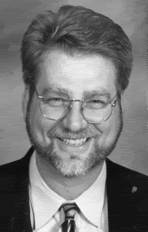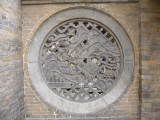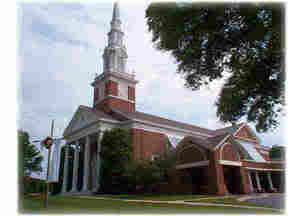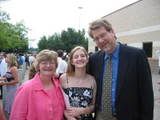the discovery of faith: a confirmation sermon (john 20)
It was evening on the first day of the week, which is to say, it was still Sunday, it was still Easter. No one had removed the flowers, the brass musicians had not yet left, the butterflies are still in the air. The disciples were still singing “Christ the Lord is Risen Today”. They were still singing “Up From The Grave He Arose”. They were still singing “Thine Be The Glory, Risen Conquering Son.”
Last Sunday we talked about what it meant to be the Easter people. One implication is that we have passed from fear to joy. The angel said, to the women at the tomb, “Do not be afraid.” And yet, later that day they have locked themselves inside the house, for fear of the Jewish authorities. Why were they afraid? Some think the Jewish authorities might have sent the police to persecute them, as had been the experience of Jesus. Others wonder if might have been accused of removing the body of Jesus. We don’t know the precise cause of the fear, but it was real.
The good news is that the risen Lord comes to stand among them, and says, “peace be with you.” He will say these words, “peace be with you”, three times (verses 19, 21, 26). Some see a parallel with the three times that Peter denies that he is a disciple of Jesus, earlier in the gospels.
Then Jesus shows them his hands and his side. The resurrection does not replace the crucifixion. Easter does erase the memory of Good Friday. And here good theology has implications for our everyday lives: faithful Christians will endure sufferings, and they will know the peace that surpasses understanding, evening as they know their woundedness. The victory that Jesus wins on the cross does not eliminate the battle scars. The risen Lord shows the disciples his hands and his side, and they rejoice.
So we are still talking about Easter, one week later. John the evangelist was teaching us that Easter is not a moment in time, not something we experience and check off the list, been there, done that. It is the way God changes the world, and how we pass from darkness to light, fear to joy, hatred to love, anxiety to peace.
The story of Jesus, the empty tomb, the women who discover it, their witness, flows into a gathering of his disciples later that day. This was the very ground of our hope, and the first followers of Jesus passed this remembrance on so that it would be preserved and celebrated. But the church remembered this story, and continues to tell it, for another reason, and that was the experience of Thomas.
The Sunday following Easter is sometimes called “low Sunday”. On Easter Sunday you can’t get a seat; on the Sunday after Easter there are often many seats to choose from! In the rhythm of life among God’s people, it is the calm after the storm. In the lectionary, a three year cycle of reading through the whole Bible, this passage from John, and the story of Thomas, is always the gospel for the Sunday following Easter.
Over the years I have come to love this Sunday, because it was here that I became acquainted with this disciple named Thomas. In the Eastern Church this day is sometimes referred to as St. Thomas Sunday, in relation to the gospel reading. The tradition has Thomas taking the gospel to India, in the first century, after the resurrection. Of course the stereotype among many of us is of “doubting Thomas”, but our Orthodox friends choose instead to remember his confession of faith (“my Lord and my God”). Earlier in John’s gospel, Thomas had asked Jesus, upon his impending departure, “We do not know where you are going? How can we know the way?” And Jesus had responded, “I am the way, the truth and the life.”
Thomas is the one who is in conversation with Jesus about the faith, and included in that faith is struggle and doubt. If the women are the first evangelists, we might designate Thomas as the first seeker! Thankfully, the disciples allowed Thomas his quest. And in his skepticism he represents all of us who come to faith and continue in faith with perseverance and struggle.
We make our way forward in the pilgrimage as we search for assurance, some basis for faith and hope. In the midst of perseverance, struggle and doubt, we look for signs. John the Evangelist was a master at telling us about the good news through the signs of Jesus: turning water into wine, feeding the hungry multitudes, giving sight to the blind. Jesus is the word, but the word becomes flesh, something we can sense. Thomas is located near the source of a long tradition of seekers, those looking for signs. And thus his honest affirmation of faith: “I will not believe unless I see in his hands the nail prints, and place my finger in his wounds”. In other words, he wants to experience it himself.
I am delighted that we are reading the story of Thomas on a day when we confirm a new group of young people into our church, on the day in which they will make their professions of faith and become members of this body. I am grateful to Teresa Dunn and the adult leaders in our youth ministry, who have mentored them. Bill Jeffries and have I met with all of the young people over the past few weeks and listened to them talk about their faith. In these personal conversations we asked questions, they answered some of the questions, and they asked their own questions. Each year I have also gone to the confirmation retreat at Lake Junaluska, and in one of the sessions, usually an hour or two, I have attempted to answer their questions: what happens after we die? What about my Jewish friend? Is Jesus the only way? How does creation relate to evolution?
Really easy questions to answer…
I have also known that many of these students have had more than their share of life experience: the illness of parents, the death of friends, seeing violence first hand. They are seeking something, searching for something.
It is always an experience that fills me with hope about the future…not that these are such wonderful young people, although they are…but hope in the possibility that they are coming to believe all of this, some of them are skeptics, and in the coming years they will test all of this out, and ask the questions of Thomas, in their own ways: “is this true? Is this real?”
Thomas had heard others talking about all of this, but he said, “I will not believe unless I see in his hands the nail prints, and place my finger in his wounds.” In other words, Thomas was asking, “is this true? Is this real?”
Many have suggested that we have moved from a modern to a post-modern world. In a modern world we can argued into the truth, debated into belief in a truth. It is a mostly rational process. But in a post-modern world, truth is different. We have to experience truth. It must come to life. Many are also suggesting that post-modernism is closer to the ancient world than modernism. The big truth in John’s gospel, from the very beginning, was that the word had become flesh, and lived among us, that God is real and alive, not the most brilliant and abstract theory of the universe but flesh and blood, a real presence among us. This is announced in the very first words of John’ s Gospel, the word became flesh, and it is confirmed at the very end, where Thomas says, in so many words, the word must become flesh. I will not believe unless I see in his hands the nail prints, and place my finger in his wounds.”
When I first began to hear the story of Thomas, at about the age of these confirmands, we were critical of him, but I know now that we are more like Thomas than we realize: as Christians, we are always trying to connect our faith with our experience. Someone has said that we remember 20% of what we are told but 80% of what we discover for ourselves.
It is essential that we confess that Easter is more than positive thinking or the thrill of victory, because we left the sanctuary last Sunday with our same griefs, our same doubts, our same struggles, right? After the resurrection, we look for the signs, by faith. Maybe we no longer hear the strong and clear soprano voices singing the alleluia descants, soaring above it all. The enthusiasm wanes, the crowds disperse, life goes on. On a “low Sunday” if we are listening, we might recall the words of Thomas: “We do not know where you (Christ), and thus, by extension, where we, where all of this is going? How can we know the way?”
The Risen Jesus shows them his hands and his side. I communicated this week with a friend, Kelly, a classmate of Pam and mine in Divinity School and a pastor in north Alabama. Years ago a tornado passed through their church in Goshen, Alabama on Palm Sunday. Twenty members of the worshipping congregation were killed that morning, among them their four year old daughter, Hannah. I asked her this week how we might help their community, passing through the storm again and she gave me a couple of practical ideas. I thought again about how all of this happened and happens right in the midst of Easter, and yet that is precisely the point. The resurrection does not replace the crucifixion, it incorporates it. He stands among us and offers us the gift of peace. The gospel for today has helped me to reflect on all of this.
On this day we also think closely about how the faith is passed on from generation to generation. I love the words of the great British Methodist composer of hymns, Fred Pratt Green:
The church of Christ in every age
Beset by change but Spirit led,
Must claim and test its heritage
And keep on rising from the dead. (589, UMH)
These young people are going to grow up, and if the past is any predictor of the future, they are going to pass through a few storms. This faith that we are all discovering together will be tested in the crucible of their lives. And they are going to have to keep exploring, keep questioning, and they will have to keep professing their faith. They are going to want to see this with their eyes and touch this with their hands, in order to know if it is true, if it is real. If they are prone to skepticism, I hope they will remember their older brother, Thomas, who speaks for all of us who come to faith and continue in faith with perseverance and struggle.
Last Sunday we talked about what it meant to be the Easter people. One implication is that we have passed from fear to joy. The angel said, to the women at the tomb, “Do not be afraid.” And yet, later that day they have locked themselves inside the house, for fear of the Jewish authorities. Why were they afraid? Some think the Jewish authorities might have sent the police to persecute them, as had been the experience of Jesus. Others wonder if might have been accused of removing the body of Jesus. We don’t know the precise cause of the fear, but it was real.
The good news is that the risen Lord comes to stand among them, and says, “peace be with you.” He will say these words, “peace be with you”, three times (verses 19, 21, 26). Some see a parallel with the three times that Peter denies that he is a disciple of Jesus, earlier in the gospels.
Then Jesus shows them his hands and his side. The resurrection does not replace the crucifixion. Easter does erase the memory of Good Friday. And here good theology has implications for our everyday lives: faithful Christians will endure sufferings, and they will know the peace that surpasses understanding, evening as they know their woundedness. The victory that Jesus wins on the cross does not eliminate the battle scars. The risen Lord shows the disciples his hands and his side, and they rejoice.
So we are still talking about Easter, one week later. John the evangelist was teaching us that Easter is not a moment in time, not something we experience and check off the list, been there, done that. It is the way God changes the world, and how we pass from darkness to light, fear to joy, hatred to love, anxiety to peace.
The story of Jesus, the empty tomb, the women who discover it, their witness, flows into a gathering of his disciples later that day. This was the very ground of our hope, and the first followers of Jesus passed this remembrance on so that it would be preserved and celebrated. But the church remembered this story, and continues to tell it, for another reason, and that was the experience of Thomas.
The Sunday following Easter is sometimes called “low Sunday”. On Easter Sunday you can’t get a seat; on the Sunday after Easter there are often many seats to choose from! In the rhythm of life among God’s people, it is the calm after the storm. In the lectionary, a three year cycle of reading through the whole Bible, this passage from John, and the story of Thomas, is always the gospel for the Sunday following Easter.
Over the years I have come to love this Sunday, because it was here that I became acquainted with this disciple named Thomas. In the Eastern Church this day is sometimes referred to as St. Thomas Sunday, in relation to the gospel reading. The tradition has Thomas taking the gospel to India, in the first century, after the resurrection. Of course the stereotype among many of us is of “doubting Thomas”, but our Orthodox friends choose instead to remember his confession of faith (“my Lord and my God”). Earlier in John’s gospel, Thomas had asked Jesus, upon his impending departure, “We do not know where you are going? How can we know the way?” And Jesus had responded, “I am the way, the truth and the life.”
Thomas is the one who is in conversation with Jesus about the faith, and included in that faith is struggle and doubt. If the women are the first evangelists, we might designate Thomas as the first seeker! Thankfully, the disciples allowed Thomas his quest. And in his skepticism he represents all of us who come to faith and continue in faith with perseverance and struggle.
We make our way forward in the pilgrimage as we search for assurance, some basis for faith and hope. In the midst of perseverance, struggle and doubt, we look for signs. John the Evangelist was a master at telling us about the good news through the signs of Jesus: turning water into wine, feeding the hungry multitudes, giving sight to the blind. Jesus is the word, but the word becomes flesh, something we can sense. Thomas is located near the source of a long tradition of seekers, those looking for signs. And thus his honest affirmation of faith: “I will not believe unless I see in his hands the nail prints, and place my finger in his wounds”. In other words, he wants to experience it himself.
I am delighted that we are reading the story of Thomas on a day when we confirm a new group of young people into our church, on the day in which they will make their professions of faith and become members of this body. I am grateful to Teresa Dunn and the adult leaders in our youth ministry, who have mentored them. Bill Jeffries and have I met with all of the young people over the past few weeks and listened to them talk about their faith. In these personal conversations we asked questions, they answered some of the questions, and they asked their own questions. Each year I have also gone to the confirmation retreat at Lake Junaluska, and in one of the sessions, usually an hour or two, I have attempted to answer their questions: what happens after we die? What about my Jewish friend? Is Jesus the only way? How does creation relate to evolution?
Really easy questions to answer…
I have also known that many of these students have had more than their share of life experience: the illness of parents, the death of friends, seeing violence first hand. They are seeking something, searching for something.
It is always an experience that fills me with hope about the future…not that these are such wonderful young people, although they are…but hope in the possibility that they are coming to believe all of this, some of them are skeptics, and in the coming years they will test all of this out, and ask the questions of Thomas, in their own ways: “is this true? Is this real?”
Thomas had heard others talking about all of this, but he said, “I will not believe unless I see in his hands the nail prints, and place my finger in his wounds.” In other words, Thomas was asking, “is this true? Is this real?”
Many have suggested that we have moved from a modern to a post-modern world. In a modern world we can argued into the truth, debated into belief in a truth. It is a mostly rational process. But in a post-modern world, truth is different. We have to experience truth. It must come to life. Many are also suggesting that post-modernism is closer to the ancient world than modernism. The big truth in John’s gospel, from the very beginning, was that the word had become flesh, and lived among us, that God is real and alive, not the most brilliant and abstract theory of the universe but flesh and blood, a real presence among us. This is announced in the very first words of John’ s Gospel, the word became flesh, and it is confirmed at the very end, where Thomas says, in so many words, the word must become flesh. I will not believe unless I see in his hands the nail prints, and place my finger in his wounds.”
When I first began to hear the story of Thomas, at about the age of these confirmands, we were critical of him, but I know now that we are more like Thomas than we realize: as Christians, we are always trying to connect our faith with our experience. Someone has said that we remember 20% of what we are told but 80% of what we discover for ourselves.
It is essential that we confess that Easter is more than positive thinking or the thrill of victory, because we left the sanctuary last Sunday with our same griefs, our same doubts, our same struggles, right? After the resurrection, we look for the signs, by faith. Maybe we no longer hear the strong and clear soprano voices singing the alleluia descants, soaring above it all. The enthusiasm wanes, the crowds disperse, life goes on. On a “low Sunday” if we are listening, we might recall the words of Thomas: “We do not know where you (Christ), and thus, by extension, where we, where all of this is going? How can we know the way?”
The Risen Jesus shows them his hands and his side. I communicated this week with a friend, Kelly, a classmate of Pam and mine in Divinity School and a pastor in north Alabama. Years ago a tornado passed through their church in Goshen, Alabama on Palm Sunday. Twenty members of the worshipping congregation were killed that morning, among them their four year old daughter, Hannah. I asked her this week how we might help their community, passing through the storm again and she gave me a couple of practical ideas. I thought again about how all of this happened and happens right in the midst of Easter, and yet that is precisely the point. The resurrection does not replace the crucifixion, it incorporates it. He stands among us and offers us the gift of peace. The gospel for today has helped me to reflect on all of this.
On this day we also think closely about how the faith is passed on from generation to generation. I love the words of the great British Methodist composer of hymns, Fred Pratt Green:
The church of Christ in every age
Beset by change but Spirit led,
Must claim and test its heritage
And keep on rising from the dead. (589, UMH)
These young people are going to grow up, and if the past is any predictor of the future, they are going to pass through a few storms. This faith that we are all discovering together will be tested in the crucible of their lives. And they are going to have to keep exploring, keep questioning, and they will have to keep professing their faith. They are going to want to see this with their eyes and touch this with their hands, in order to know if it is true, if it is real. If they are prone to skepticism, I hope they will remember their older brother, Thomas, who speaks for all of us who come to faith and continue in faith with perseverance and struggle.




 Carter's Roost
Carter's Roost




0 Comments:
Post a Comment
<< Home